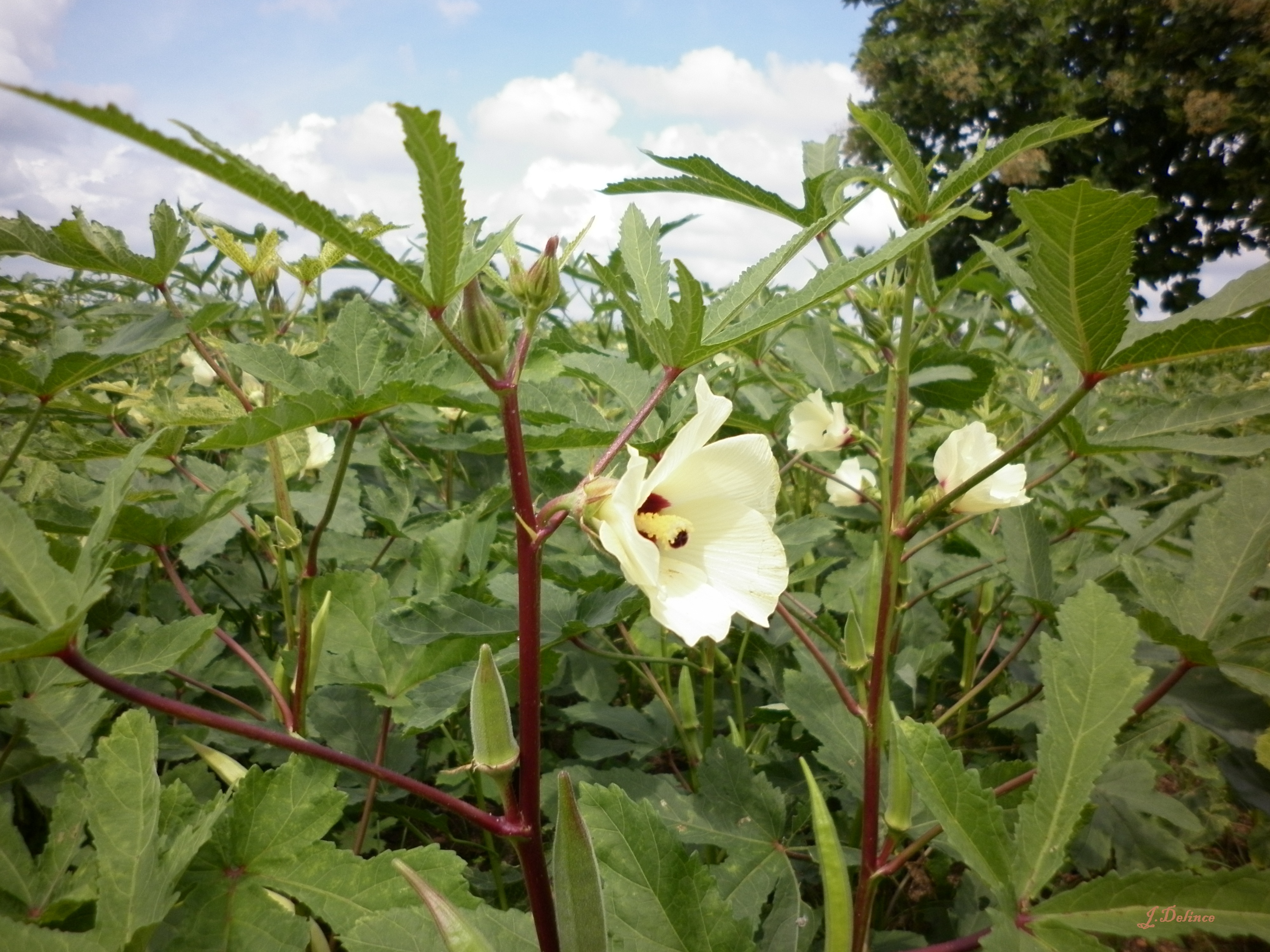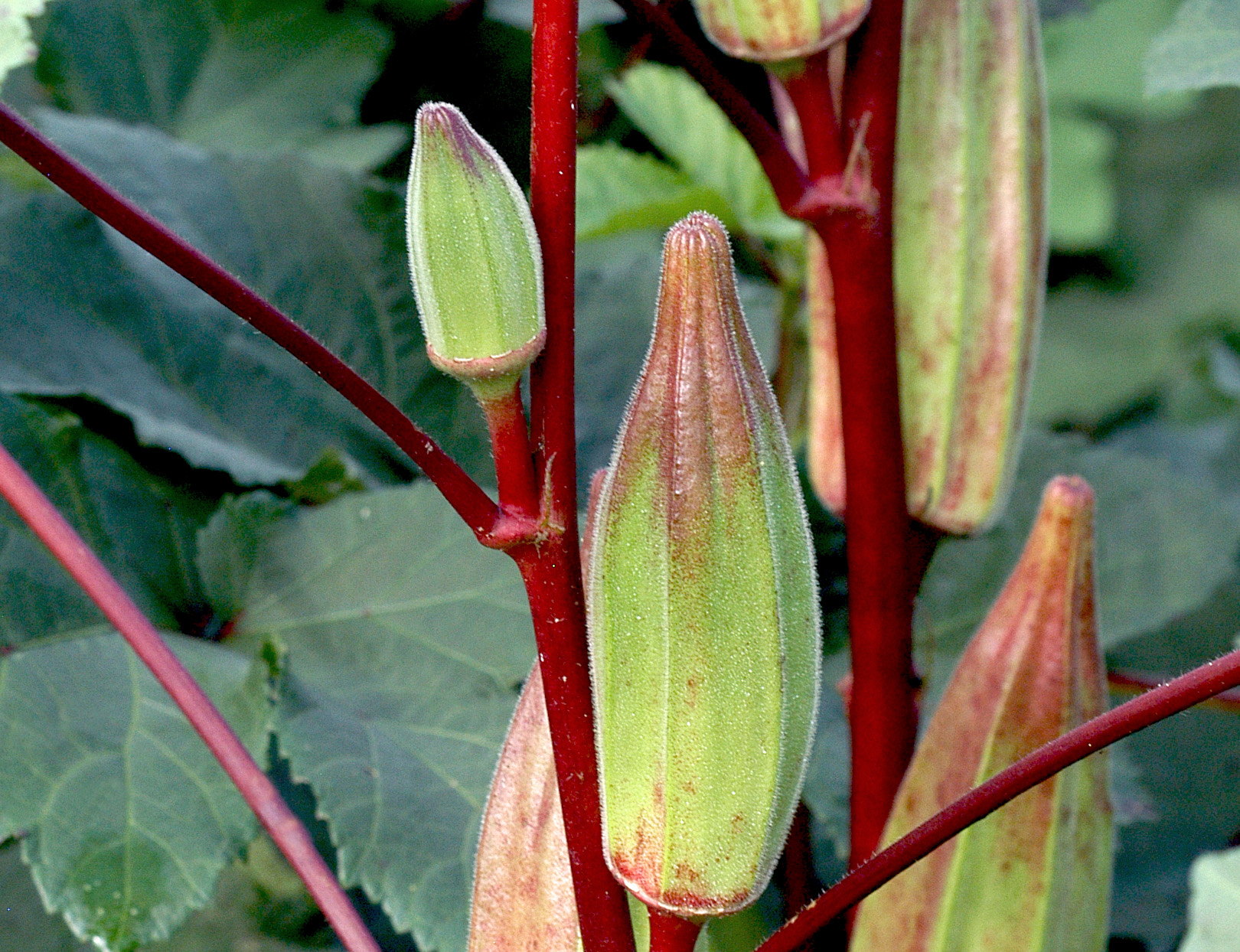

The early growth of okra is often slow, but the plants grow much faster once summer starts sizzling. Just know that if you run into an extended dry period and can't seem to water enough, okra will be the last to suffer. Okra is appreciated for its ability to withstand drought compared to other vegetables, but for good growth and production, you'll need to water at least an inch a week, just as with other vegetables. Water the little plants if rain is not expected, but wait a few days before mulching to give the soil a chance to absorb the sun's warmth. Plant slightly deeper (about ½ inch) than they grew in their pots. Gently remove them from the pot, separate the seedlings, and set them about 10 inches apart. Thoroughly water your seedlings an hour before you plant them. Okra seedlings have fragile taproots that you need to be careful not to damage. For an even better chance at a big harvest, you'll also want to make sure your okra plants get all the nutrients they need throughout the season by feeding them with a continuous-release fertilizer such as Miracle-Gro® Performance Organics® Edibles Plant Nutrition Granules, following label directions. Or, you can improve the nutrition and texture of your native soil by mixing in aged compost-enriched Miracle-Gro® Performance Organics®All Purpose In-Ground Soil with the top few inches. Plants benefit from a generous amount of compost or other rich organic matter, which should be thoroughly mixed into the soil before planting. Okra grows best in soil with a near-neutral pH between 6.5 and 7.0, although it will do fine in a pH as high as 7.6. In the North, gardeners might wait until late June to plant, since pods appear within 2 months. Plants like it when nights are at least in the 60s and days 85 or warmer. Harvest okra pods when they are 2 to 4 inches long.Ĭhoose your sunniest spot for growing okra, and wait until the weather is warm to set out your plants.Promote a more abundant harvest by regularly feeding with a continuous-release plant food.Okra loves the heat and can withstand a dry spell, but do your best to give plants 1 inch of water every week.Improve native soil by mixing in several inches of aged compost or other rich organic matter.

Space okra plants 10 inches apart in a very sunny area that has fertile, well-drained soil with a neutral pH of 6.5 to 7.0.Plant okra in hot weather when evening temperatures are in the 60s or warmer.For the best results, begin with vigorous okra starter plants from Bonnie Plants®, the company that has been helping home gardeners succeed for over a century. As long as okra seedlings are handled gently, as if they were breakable eggs, they can be slipped into the garden – or into large containers – just as the hot season begins. Growing okra requires warm weather, but by using seedlings, you can shave 3 weeks or more from its usual long season. As more gardeners discover that they really like okra, the range of this warm-natured hibiscus cousin is steadily edging northward.


 0 kommentar(er)
0 kommentar(er)
